Lombok's #1 Tourism Magazine
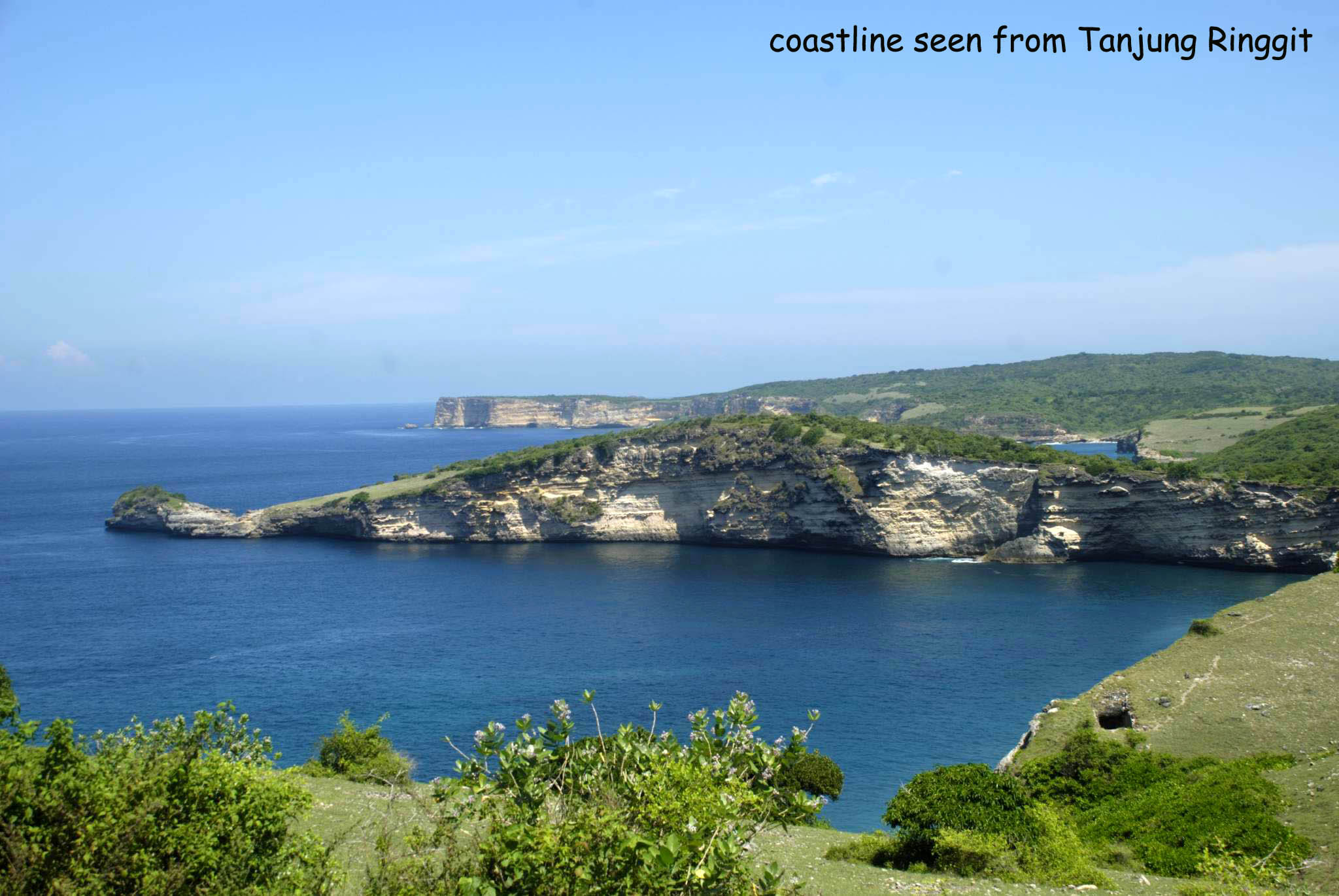 The large peninsula on the southeast corner of Lombok is a largely unexplored area – surrounded by towering limestone cliffs, pristine beaches, and superb views – and steeped in history.
The large peninsula on the southeast corner of Lombok is a largely unexplored area – surrounded by towering limestone cliffs, pristine beaches, and superb views – and steeped in history.
Used as an outpost for invading Japanese forces during World War II, the cliffs of the peninsula are riddled with tunnels and, standing alone at the top of the hill, a rusting cannon bears silent testimony to a history that is being eroded as surely as its rusting steel.
Because the area is so remote and sparsely populated, little has been written about the Southeast Peninsula. Even guidebooks such as the Lonely Planet barely touch on this fascinating area, which is truly “off the beaten track”
Tanjung Ringgit is around 103 kilometres from Senggigi and the trip will take around three and a half hours by car, travelling south through the Central Lombok capital of Praya. Alternatively, the area can be reached travelling east from Kuta on the south coast.
It is best to hire a car with a local guide for the trip or, to explore the area fully, stay at HOPlanet… the only good accommodation in the area. The resort is located nearby and has 4WD vehicles as well as local knowledge of all the attractions in this area.
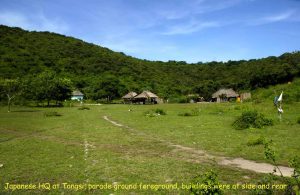
The last 15km of road leading to the lighthouse at Tanjung Ringgit is in very bad condition and will take just over one bone-jarring hour to travel!
Monkeys can be seen crossing the “road” occasionally and wild pigs help themselves to the tender maize cobs thoughtfully grown by the villagers. Apparently many years ago small deer roamed this peninsular, but alas, no more. More than likely you will encounter a herd of water buffalo slowly making its way along the road attended by the herdsman.
Just before sighting the Tanjung Ringgit lighthouse standing out above the trees, is a double bamboo gate on the left hand side. Nailed to a tree is a small bare metal sign painted with “Tangsi 50m, Goa Jepang, Villa”.
Tangsi is the name of the area and is the Indonesian word for barracks (the first clue as to what was there), Goa (actually Gua misspelled!) means cave, Jepang is Japanese, and Villa is villa.
A steep wide stony road leads 300 metres downhill to a beautiful litter-free white sandy beach lined with trees and with a flat grassy area behind it. This is Tangsi, on the north coast of the peninsular, and on a clear day the volcanic peak of Gunung Agung stands out clearly across water.
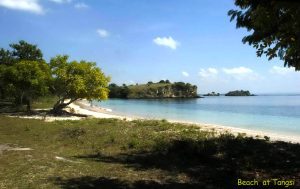
This grassy area was the base camp for the Japanese gun battery in World War II, after the Japanese invaded Lombok on 9 May 1942.
Today there are only a few local thatched houses and a couple of berugaq, (open sided thatched shelters with a raised platform for sitting), to the rear just below the base of the hill.
Here I met a really nice old gent, Bapak Sahdi; in his early 60’s, whose father had told him stories about this area in WWII. He told me that the two 6″ or 15 centimetre antisubmarine guns and the equipment for the basic lighthouse were landed on the beach here.
The origin of these guns has not yet been fully determined, but after a lot of research it seems most likely that they are German 15 centimetre guns, possibly L40 calibre, made by Alfred Krupp before WWI and were either naval guns that were remounted in Surabaya (Java) naval shipyards or coastal artillery pieces.
The steep stony road I had just walked down was constructed by hand, without the use of any machinery, by local people conscripted by the Japanese army. Thousands of local people were used to construct the camp, earthworks, trenches, tunnels, the road and the gun emplacements.
Each town or area had to supply a quota of men who worked for a week or so and then were replaced by men from the next area on the list. The majority of these conscripted men arrived on foot. Some from the coastal areas arrived by paddling their outrigger fishing canoes; there being no motorized canoes or boats at that time.
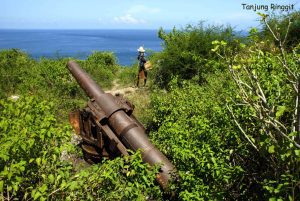 The two guns and equipment for the lighthouse were hauled up this steep road, in pieces (I presume), again without the help of machinery, to the top of the ridge. From here they were dragged a further 800 metres eastwards along the top of the ridge to Tanjung Ringgit.
The two guns and equipment for the lighthouse were hauled up this steep road, in pieces (I presume), again without the help of machinery, to the top of the ridge. From here they were dragged a further 800 metres eastwards along the top of the ridge to Tanjung Ringgit.
Here, at the site of the present day lighthouse, the light was assembled; the two guns being dragged a further 300 metres down the slope to their emplacements, where they were assembled.
On the fence around the lighthouse, facing the road is a small sign which indicates the gun (meriam) is 300 metres away and the Giant’s Cave (Gua Raksasa) is 600 metres away.
From the corner of the fence at the bottom of the track can be seen another rough track curving downward to the left, and then around to the right, finally disappearing round the headland. At a point around 100 or so metres before it “disappears” (and around 400 metres from the lighthouse) is the location of the remaining gun.
The emplacement for the elusive second gun is further to the east of the remaining gun, hidden among the scrub and bushes. To see it, you will have to walk eastwards a couple of hundred metres and then work your way back around to the area of the first gun: it is not easy to find!
Chopping our way through the prickly bushes, we first came upon a large thick round rusty steel plate with bolt holes around the edge. This was the two metre diameter base plate of the elusive second gun. Alas – no gun! All that remains is the concrete base left behind after the gun was taken away.
Stories of the missing gun abound. One story is that it was removed by the military, in the 1990’s, for display at their camp. However, this is not true. I visited three military camps on that particular wild goose chase!
My local guide, Pak Sahdi told me another story. Apparently, over 30 years ago, the gun was to be taken for scrap and, somehow, the people involved managed to load it onto a truck. However they were unable to move the truck because the uneven terrain would have caused the top-heavy vehicle to topple over.
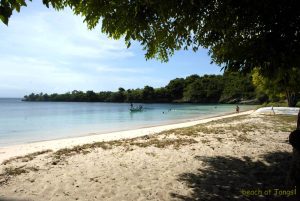
They managed to tip the gun off the truck and it landed on its side some distance away from the concrete base. It was later dissembled and taken away in pieces. The heavy steel base-plate, some 2 metres across, still lies on the ground with the concrete base, about 25 metres from the walled gun emplacement.
Fact or fiction? I have my doubts obviously, and am still pursuing this elusive piece of artillery; hopefully someone, somewhere, knows something!
One thing is clear: it would have been a huge task to dismantle and transport one of these guns from Tanjung Ringgit to any nearby town, and it seems very odd that no-one seems to remember anything about it!
This gun battery, unlike the one near Bangko-bangko in the southwest, was not bombed by the United States warplanes, thus leaving us a tangible reminder of one of the darker periods in Lombok’s history.
These two guns were located here to try and prevent Allied submarines (British and American) from using the straits between Lombok and Sumbawa as an alternative route to the Lombok Strait between Bali and Lombok, which was heavily patrolled and partially mined during the war.
Indeed, a similar gun battery located on the cliffs in south-west Lombok, near Bangko-bangko, is documented as “hurling shells” at the American submarine the SS -374 “Loggerhead”, apparently without damage, in the Lombok Straits on 14 July 1945.
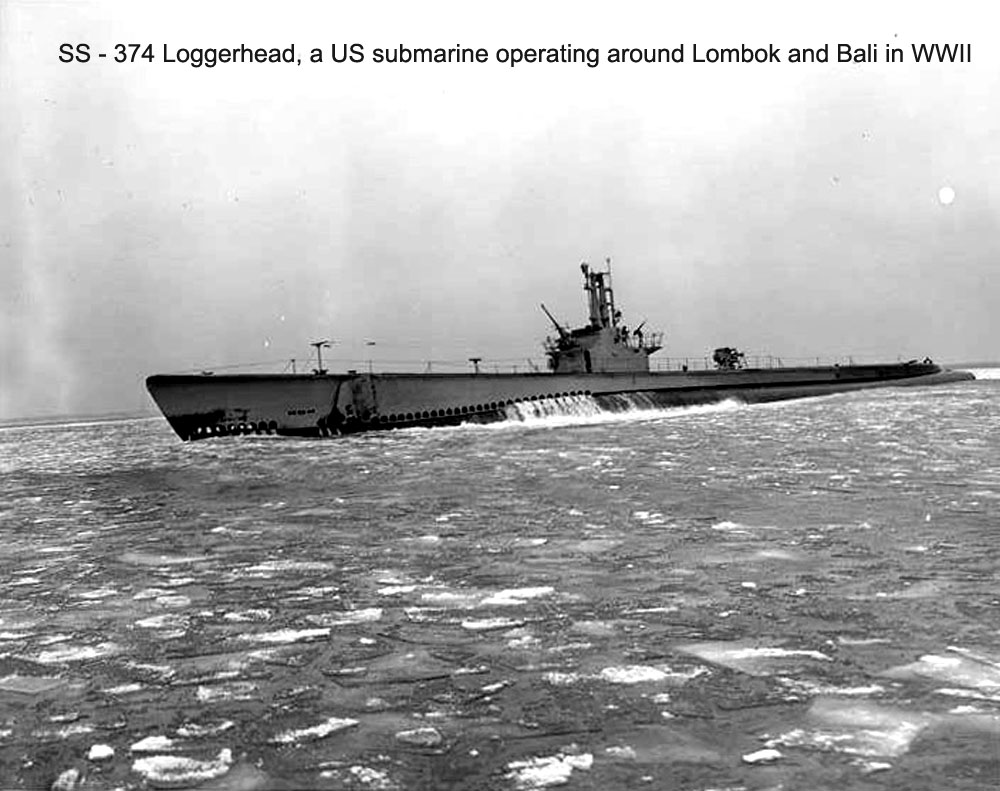
Few foreign tourists visit this area. There are occasional trips from Tanjung Luar and Ekas to this beach, either for swimming or to walk about a kilometre and a half to see the remaining gun; however, most people seem unaware that this was where it all started and was the base camp of the Japanese army in this area.